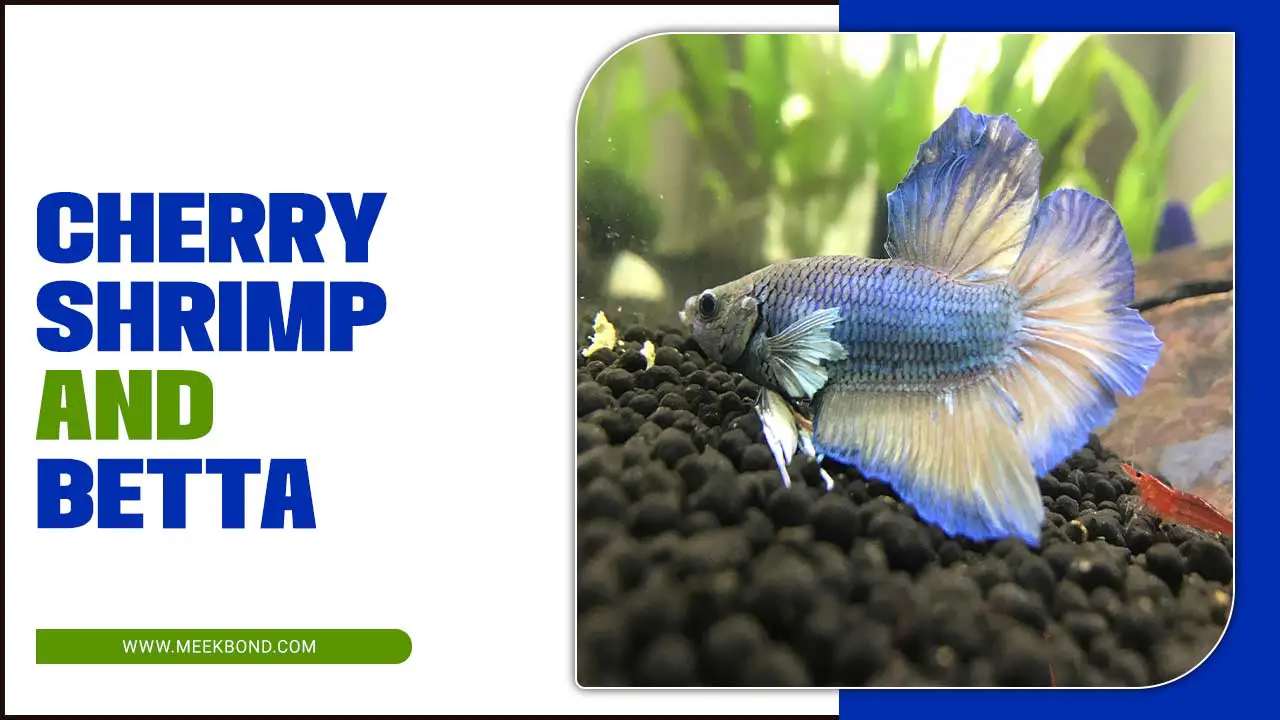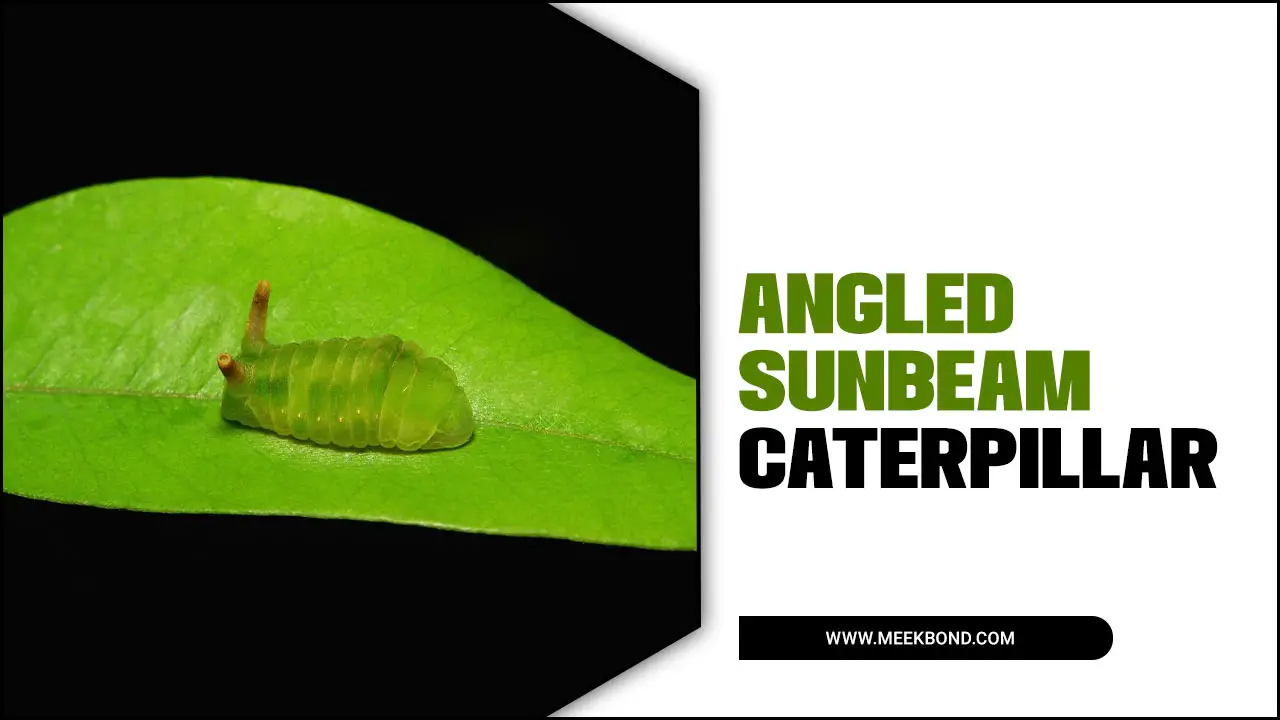The world of aquatic life is fascinating and diverse, and one of the most intriguing creatures that inhabit our waters is the Plecostomus, commonly known as “Pleco.”
These fish are beloved by aquarium enthusiasts worldwide for their unique appearance and their ability to help keep aquariums clean and healthy. However, one type of Pleco stands out from the rest: the largest Pleco species in the world.
These impressive creatures can grow up to three feet long and weigh as much as 100 pounds, making them a true sight. But what exactly makes these magnificent fish tick, and how can you care for them properly?
Here, we’ll take a deep dive into the world of the biggest Pleco and explore everything you need to know to keep these creatures thriving in your aquarium. From their natural habitat to their diet, behavior, and breeding habits, we’ll cover it all and give you a glimpse into the fascinating world of these gentle giants.
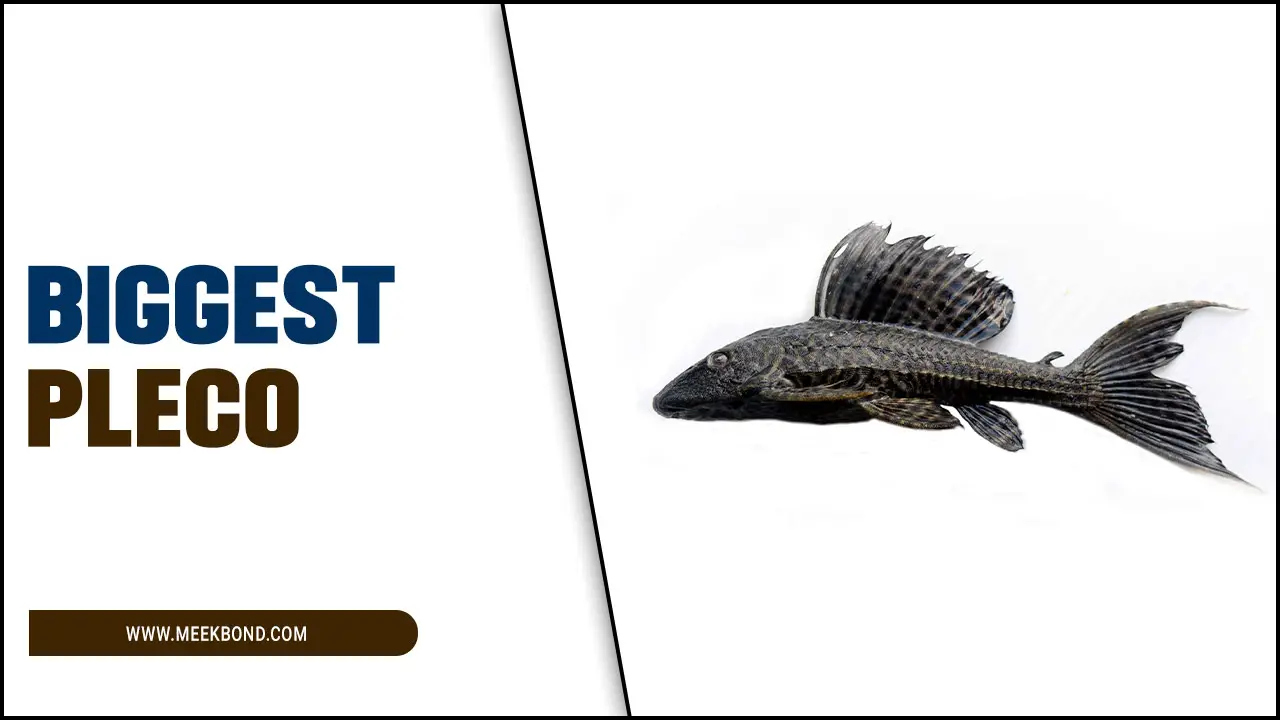
10 Types Of Biggest Pleco

The biggest pleco is a sight to behold. These massive catfish can grow up to three feet long and weigh as much as ten pounds. Their size is impressive, but their unique appearance sets them apart. Their armored plates and sucker-like mouths make them look like something from a prehistoric era.
Despite their intimidating appearance, plecos are popular aquarium fish because they are relatively easy to care for. It can help keep the tank clean by eating algae and other debris. However, it’s important to remember that even the biggest-pleco needs plenty of space to swim and grow.
An adult pleco requires a tank of at least 75 gallons; they may even need a larger tank if they grow. Providing plenty of hiding places and other enrichment for these fish is also important, as they can become stressed in a bare tank. Here are 10 types of the biggest-pleco.
1.Zebra Pleco
The Zebra Pleco is among the aquarium hobby’s most popular and sought-after pleco species. Many people regard it as one of the most beautiful and unique catfish species due to its striking black and white striped pattern. The Zebra Pleco is relatively small, growing only about 3-4 inches long. Despite its small size, this fish has a big personality and can be quite aggressive, especially when defending its territory.
However, the Zebra Pleco is not the biggest out there. The title of the biggest-pleco goes to the Common Pleco, which can grow up to 2 feet long. This behemoth fish can be challenging to keep in a home aquarium, requiring a large tank and plenty of swimming space.
2.Bristlenose Pleco
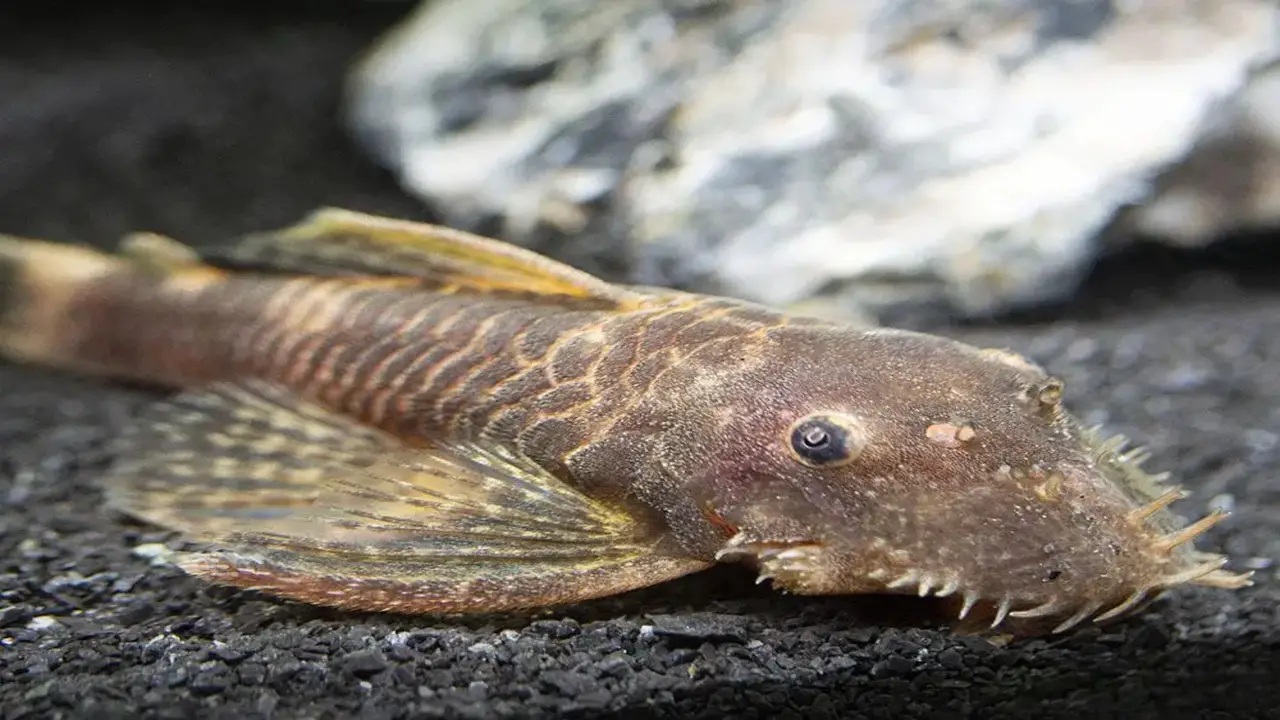
The Bristlenose Pleco is one of the most popular species of plecos among aquarium enthusiasts. These fish possess a unique appearance and the ability to clean aquariums. They have a flattened body with a wide head and a mouth adapted for scraping algae off surfaces. The Bristlenose Pleco is a relatively small species, growing to a maximum size of around 6 inches. However, they have a big impact on keeping your aquarium clean.
In contrast, the biggest-pleco is the common pleco, which can grow up to 2 feet long. Most aquariums do not recommend these fish due to their size and ability to produce much waste. However, a common pleco can greatly add to a large aquarium or pond. Their ability to keep aquariums clean and eat some aquarium plants also makes them known.
3.Sailfin Pleco
The Sailfin Pleco is one of the biggest-plecos in the world. Native to South America, this species can grow up to 20 inches long and weigh over 2 pounds. Its distinctive sail-like dorsal fin, which gives the fish its name, can reach a foot in height and is a beautiful sight. The Sailfin Pleco is a popular aquarium fish due to its hardiness and ability to clean algae from the tank. However, its large size requires a spacious tank and a balanced diet.
The Sailfin Pleco feeds on various plant matter and small invertebrates in rivers and streams in the wild. A balanced diet with plant matter and protein-rich foods is important in captivity. This can include algae wafers and vegetables such as zucchini and cucumber. And even small amounts of shrimp or other meaty foods.
4.Gold Nugget Pleco
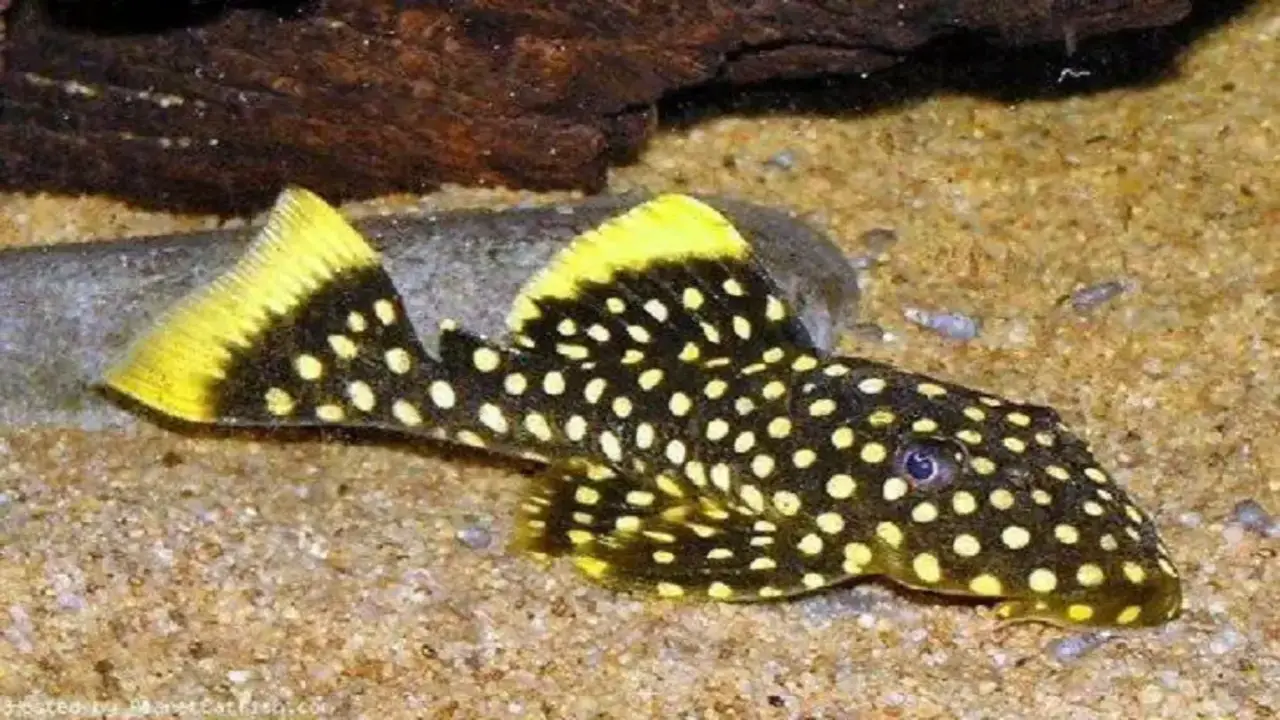
The Gold Nugget Pleco is considered one of the most beautiful species of pleco fish, characterized by its stunning yellow and black patterns. This fish is popular among aquarium enthusiasts due to its peaceful temperament and ease of care.
However, the biggest Gold Nugget Pleco can grow up to 10 inches long, which makes it challenging to accommodate a small tank. To keep this fish happy and healthy, providing it with a spacious aquarium with plenty of hiding places and a strong filtration system is important.
The Gold Nugget Pleco is not the biggest-pleco species but is certainly one of the most eye-catching. The biggest-pleco species is the common pleco, which can grow up to 24 inches long. Common plecos require a large aquarium and a varied diet to thrive. And they can be quite destructive to plants and decorations.
5.Royal Pleco
Aquarium hobbyists widely know the Royal Pleco as one of the biggest-plecos. This magnificent fish species is incredibly popular among aquarists due to its striking appearance and unique behavior. The Royal Pleco can grow up to 24 inches long, making it a true showstopper in any aquarium. Its distinctive black and white spots on its body and bright red fins make it a focal point of any tank.
Not only is the Royal Pleco an eye-catching addition to any aquarium, but it is also a hardy fish species that is incredibly easy to care for. This pleco exhibits good behavior and peacefulness towards other fish in the tank. It is also an excellent algae eater, essential to any tank’s clean-up crew.
6.Leopard Frog Pleco

Aquarium hobbyists widely know the Leopard Frog Pleco as one of the biggest-plecos. Its distinctive pattern and unique look make it a favorite among many fish enthusiasts. This species is native to the Amazon Basin and can grow up to 10 inches long.
People know them for their ability to clean algae off aquarium glass. It can be a great addition to any tank. However, it is important to note that this species may become territorial with other bottom-dwelling fish and requires a large tank with plenty of hiding spaces.
People know Leopard Frog Plecos for their hardiness, adaptability to different water conditions, and size. They are omnivores and require a balanced diet of algae and meaty foods, such as shrimp and pellets. Maintaining a clean tank and performing regular water changes are important to keep them healthy and happy.
7.Rubber Lip Pleco
The biggest-pleco in the aquarium world is the Rubber Lip Pleco. These fish, known for their ability to clean algae off aquarium walls, can grow up to 16 inches long. They are a popular choice for aquarium enthusiasts due to their unique appearance and ability to keep the tank clean.
Rubber Lip Plecos are typically brown with a rubbery texture on their lips, hence their name. They are hardy fish and can tolerate many water conditions, making them a great choice for beginner aquarists.
However, despite their popularity, it is important to note that Rubber Lip Plecos require a large tank with plenty of hiding spaces and a proper diet to keep them healthy and happy. They are omnivores and should be fed a balanced diet of algae wafers, vegetables, and protein-rich foods. Overfeeding can lead to health problems and a buildup of waste in the tank.
8.Blue-Eyed Pleco
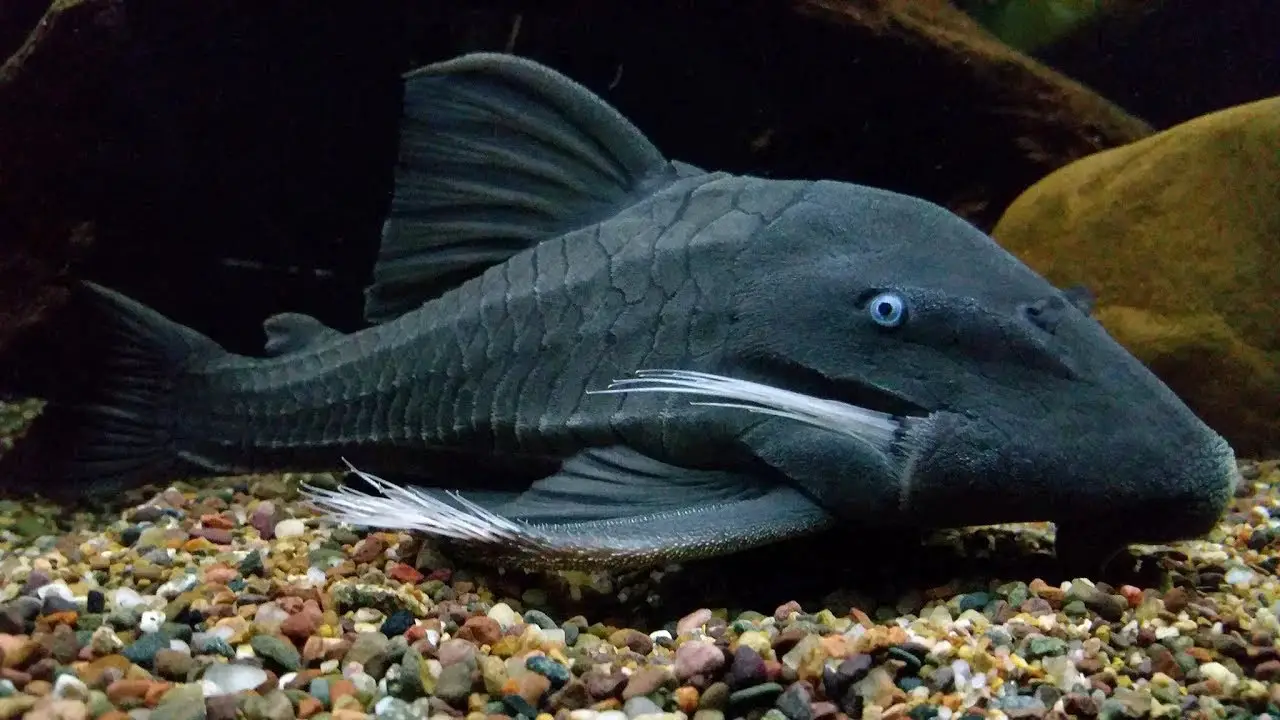
The Blue-Eyed Pleco is one of the most popular species of plecos in the aquarium trade. This beautiful fish is known for its striking blue eyes and distinctive markings on its body. However, the biggest-pleco ever recorded was not a Blue-Eyed Pleco but a species called the Pterygoplichthys gibbiceps.
This massive fish measured over two feet long and weighed over 10 pounds! Despite its size, this pleco is known for being relatively peaceful and easy to care for in the aquarium.
While the Blue-Eyed Pleco may not be the biggest-pleco species, it is still a stunning addition to any aquarium. These fish are generally peaceful and can be kept with other non-aggressive species. They require a well-maintained aquarium with plenty of hiding places. And a varied diet that includes algae and other plant-based foods.
9.Butterfly Pleco
The Butterfly Pleco, also known as the L168, is a popular South American catfish from the Amazon River. It is a medium-sized pleco, growing up to 5 inches in length, and is known for its striking appearance with an intricate pattern of black and white stripes.
Despite its beauty, the Butterfly Pleco is not the biggest-pleco species. The common pleco, also known as the Hypostomus plecostomus, holds the title for the largest pleco species, growing up to 2 feet in length.
However, the Butterfly Pleco is still a highly sought-after species among aquarium enthusiasts due to its unique appearance and behavior. They are peaceful fish that can be kept in a community tank with other non-aggressive fish. They know that algae eaters make a great addition to any tank that needs help keeping algae under control.
10.Candy Striped Pleco
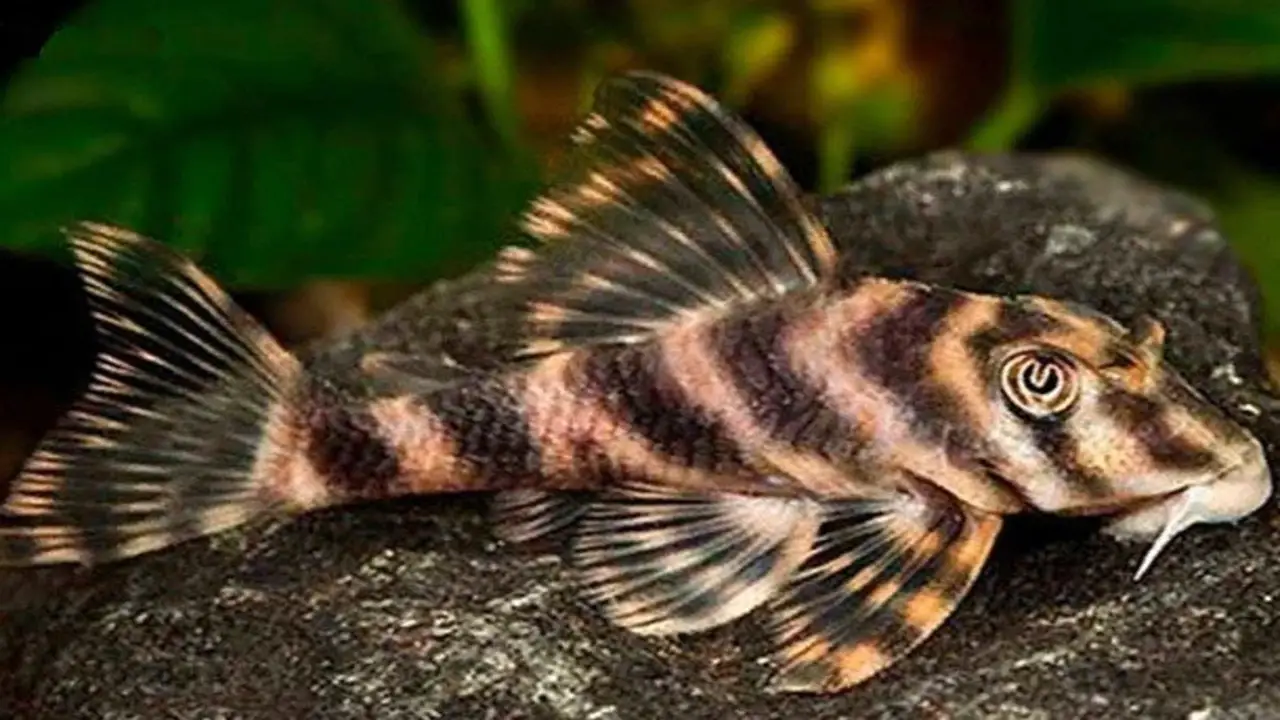
The Candy Striped Pleco is one of the most popular species of plecos in the aquarium hobby. They are known for their distinctive black and white stripes resembling the classic candy cane. While they may be a smaller species of pleco, they are still a great addition to any tank, adding a unique and playful energy. However, the biggest-pleco is the common pleco, which can grow up to two feet long.
This massive fish requires a large aquarium and plenty of space to swim. Common plecos are popular for keeping tanks clean because they are great algae eaters. Peaceful fish can coexist with other species if they are not too small to be seen as prey, regardless of their size.
Why Plecos In Captivity Stay So Much Smaller
Plecos, also known as plecostomus, tend to stay smaller in captivity because of several factors. One of the main reasons is their diet. In the wild, plecos eat a varied diet that includes algae, plants, and invertebrates. However, in captivity, they are often fed a diet high in protein and low in fiber, which can stunt their growth.
Additionally, the size of their tank can also play a role in their growth. If they are kept in a tank that is too small, they may not have enough room to grow to their full size. Lastly, genetics can also play a role in their size, as some species of plecos are naturally smaller than others.
Nitrate Building Up In The Water May Hinder The Growth Of Your Fish
Nitrate is a compound that forms naturally in the water due to the breakdown of fish waste and uneaten food. While a certain level of nitrate is normal and necessary for the growth of beneficial bacteria in the aquarium, too much nitrate can harm fish.
High nitrate levels can cause stress and illness in fish and may even hinder their growth. It is important to regularly test the nitrate levels in your aquarium water and perform water changes as needed to keep nitrate levels within a safe range for your fish.
What’s The Expected Growth Rate Of Plecos With Age?
To answer the command, the expected growth rate of plecos with age depends on various factors such as the pleco species, water temperature, water quality, diet, and genetics. Generally, plecos grow slower when young, and their growth rate accelerates as they age.
Some pleco species can reach up to 24 inches long, while others may only reach about 4 inches. It is important to provide proper care and a suitable environment to ensure optimal growth for plecos.
Conclusion
Regarding the biggest pleco, size does matter. These monstrous fish can grow up to three feet long and weigh over 50 pounds. It’s truly a sight to behold and something every fish enthusiast should aspire to have in their collection. Regarding freshwater aquariums, the plecostomus, or pleco for short, is popular with many fish keepers.
With over 150 different species, a pleco suits almost any aquarium. However, one of the biggest-plecos in the world is the Pterygoplichthys gibbiceps, also known as the sailfin pleco or leopard pleco. This species can grow up to two feet long and weigh over 10 pounds, making it a striking addition to any large aquarium.
FAQs:
What Is The Largest Recorded Size Of A Pleco, And Where Was It Found?
The largest recorded size of a pleco is approximately 3 meters (10 feet) long. It was found in the Amazon River basin in South America.
How Long Does It Take For A Pleco To Reach Its Maximum Size?
The answer to this question may vary depending on the specific species of pleco. However, generally, it can take a few months to several years for a pleco to reach its maximum size. Some species may reach their full size within a year or two, while others may take several years to reach their maximum size.
What Are The Dietary Needs Of A Pleco That Size?
The dietary needs of a pleco that size would typically include a varied diet consisting of algae wafers, fresh vegetables such as zucchini and cucumber, and occasional protein-rich foods such as shrimp or fish. It is important to provide a balanced diet and to avoid overfeeding to prevent health issues.
Can A Pleco Of That Size Keep In A Home Aquarium, Or Is It Better Suited For A Public Aquarium?
Without information on the specific size and species of pleco being referred to, one cannot provide a definitive answer easily. However, if you appropriately size and maintain the tank, plecos can generally be kept in home aquariums. Some larger species of plecos may require larger tanks and more specialized care, making them better suited for public aquariums.
Are There Any Specific Challenges Or Concerns With Caring For A Pleco Of That Size?
Yes, there are specific challenges and concerns with caring for a pleco of a large size. Some of these include:
Tank size: Plecos require a large swimming tank to move freely. A pleco of a large size needs a tank of at least 150 gallons or more.
Diet: As plecos grow, their dietary requirements change. Large plecos need a varied diet, including vegetables, algae, and protein. They may also require supplements to meet their nutritional needs.

Aquarium passion is all about connecting with the aquatic life and providing education to the public on the importance of these creatures. We showcase a wide variety of marine life through our exhibits as well as working with schools to provide unique learning opportunities for students of all ages.

